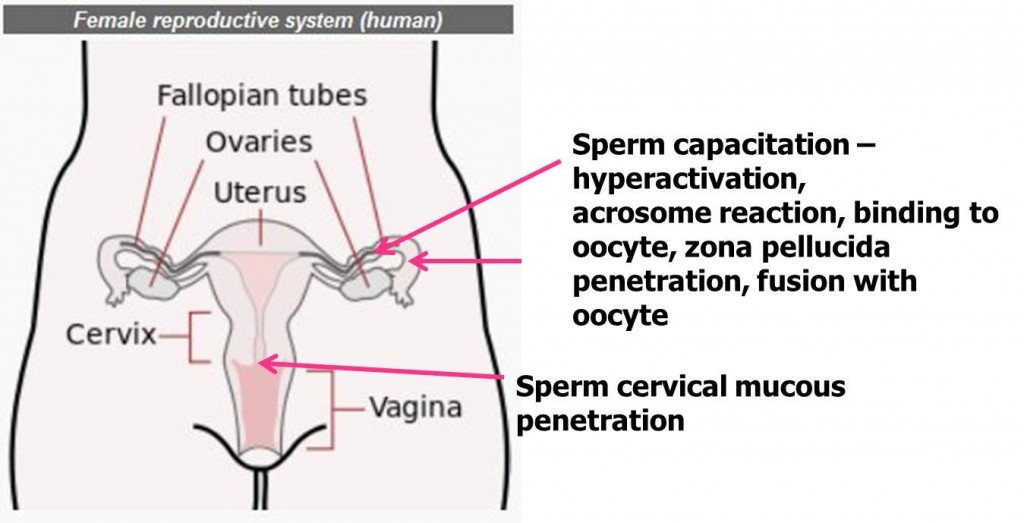Sperm functionality: Importance in assessing sperm quality, fertilization success and live birth outcome
The WHO5 manual (2010) for semen analysis in 2010 sparked a great deal of debate. Perhaps the most important aspects emerging from the debate was that specific “single value” cut-off points are not useful to distinguish between “good and bad sperm quality” but that ranges around these cut-off points provide a better estimate of the quality of a semen sample. Moreover, van der Horst and Du Plessis (2017) in a review paper warned that the WHO 5 manual should be used for defining the quality of a semen sample and not for defining its fertility potential. Furthermore, these authors suggested strongly that there should be greater emphasis on sperm functionality testing.
So, what is sperm functionality? What are the distinctions between semen characteristics and sperm functionality?
Whereas semen characteristics inform us about sperm quality per se, sperm functionality relates to the capacity of sperm to successfully cross the different barriers in the female reproductive track and become “competent” to eventually fertilize the oocyte (See figure below). What are these barriers? Firstly, the sperm rich fraction of the ejaculate seems to reach the cervix within seconds after ejaculation but then needs to pass through the cervical mucous. Only sperm with rapid progressive movement seem to pass this cervical barrier. Mortimer and Mortimer (2013) devised a sperm mucous penetration test. Sperm are challenged by their own viscous seminal plasma. A combination of sperm kinematic parameters is used to objectively and quantitatively define sperm that will successfully pass this first barrier using CASA. When five million sperm in the total ejaculate “pass mucous penetration criteria” it is considered functionally competent to potentially fertilize the oocyte.

Sperm that penetrate the cervical mucous and pass beyond the cervix will now undergo capacitation in the oviduct (uterus – oxytocin – passive sperm transport). So how do we measure sperm functionality in terms of capacitation? The most important landmark of capacitation is hyperactivation. Sperm hyperactivation is typically associated with three events: attachment to the oviductal epithelium, detachment from the epithelium during ovulation and thirdly attachment to and penetration of the zona pellucida of the oocyte. It is accordingly important to develop quantitative tests that will measure the ability of sperm to become hyperactivated. CASA is a powerful tool and is used to quantify sperm hyperactivation by a combination of cut-off values for different kinematic parameters. In human and animal studies hyperactivation >20% relate to high quality sperm and a very high predictive value in terms of fertilization success as well as live birth outcome. In our laboratory we devised a simple “flush technique” and semen or washed sperm is flushed into a Leja chamber using a hyperactivation medium containing caffeine or progesterone or procaine hydrochloride. A high quality semen sample will usually show >20% HA within 30 minutes. Modern CASA systems such as SCA 6.2 are useful in terms of the quantification of hyperactivation and potential in fertility assessment.
The acrosome reaction cannot take place if the main processes of capacitation have not been activated. The next step in establishing sperm functionality is to test the ability of a sperm sample to undergo the acrosome reaction in the presence of Ca++ ionophore. We quantified acrosome intactness and subsequently the acrosome reaction by using PNA in combination with Hoechst stain and the automated SCA CASA module “Acrosome Reaction”. It is accordingly important to show that most sperm have intact acrosomes (control) but that after induction of the acrosome reaction there is a 15% difference when compared to the control.
The final step is attachment and penetration of sperm through the zona pellucida and sperm functional tests such as the hemi-zona assay can be used. However, the problem relates to availability of human oocytes and difficulty and cost effectiveness of the technique. Accordingly other assays have been used but there is a great need for a simplified test. We are currently investigating if attachment of human sperm to the vitelline membrane of a chicken egg will relate to high versus low quality sperm.
Many other methods exist to measure the functional quality of sperm such as the mitochondrial membrane potential, fragmentation of the DNA, chromatin maturity to name a few. It is important in the clinical laboratory that the emphasis shifts to measuring these and the above facets of sperm as most of these relate to the ability of the sperm to fertilize the oocyte successfully. Moreover, many of these aspects can now be quantified routinely, objectively and rapidly using CASA.
Prof Gerhard van der Horst (PhD, PhD)
Senior Consultant
MICROPTIC S.L.



Leave A Comment